From the Library - Len Mullenger
The Bardin Globes
A couple of years ago (2007/8) a gentleman visitor
asked me if the globes in the library were Bardin globes. I agreed that
they were and he said they must have been made by his Great, Great,
Great Grandmother Elizabeth Bardin. I obtained permission for us both
to take a close look at the globes.
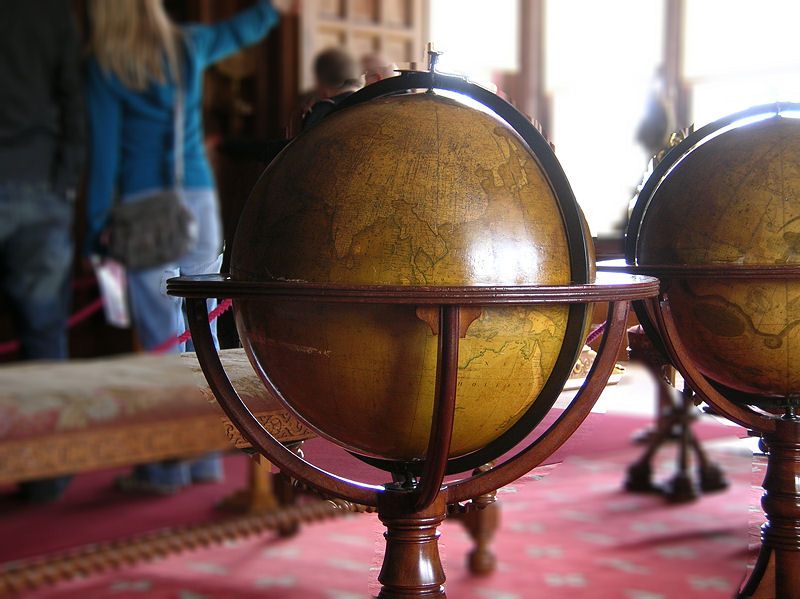
The Bardin company was founded in 1780
by William Bardin (1740-1798) in association with Gabriel Wright. Their
first globes were produced in 1782 until William Bardin moved premises
in 1794. By then his son, Thomas Marriot Bardin (1768-1819) had finished
his 7-year apprenticeship with his father and went into partnership
with him. Until then the globes manufactured had been 9 and 12 inches
in diameter but around 1798 they produced 18inch globes like the one
at Charlecote. In 1820, a year after Thomas Bardin's death, his Daughter,
Elizabeth Marriot Bardin (1799-1851) took over the running of the company.
In 1832 she married a silversmith, Samuel Sabine Edkins (1791-1853)
and the globes then produced bore his name until his death when the
firm ceased production.
So it would appear that the visitor was incorrect as the Charlecote
globes date from 1807 so were made by Elizabeth's Father Thomas Marriot
Bardin. They still bear the company name of W & T.M.Bardin even
though William had died in 1798.
William Bardin did not start globe manufacture de novo but built
on the experience of an earlier globe maker Gabriel Wright (1740-1803)
who was himself an apprentice of Benjamin Martin (1704-1782) and made
Martin globes until he joined Bardin in 1780. Working backwards Martin
had bought his globes from James Ferguson (1710-1776) who bought his
copper plates from John Senex (1690-1740). It was Senex who founded
globe making in Britain. He was an astronomer and mapmaker to Queen
Anne but he was also an engraver and could produce the copper plates
for the globe gores (see illustration). His widow sold these to James
Ferguson an instrument maker, who in turn passed these on to James Martin.
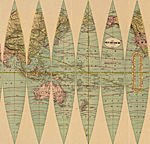 a globe gore
a globe gore
How globes were made
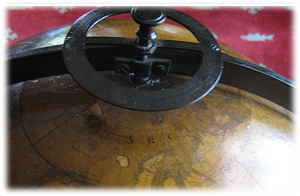 A
sphere was covered with moist papier-mâché and left to
dry. It was then cut with a sharp knife around the equator to create
two hemispheres. These were then removed from the sphere and glued together
to create a hollow ball. This was covered to a thickness of one eighth
of an inch (3mm) with white enamel made from whitening, oil, turpentine
and glue. The ball was then machined to make a perfect sphere using
a metal rod down the centre to hold it. The metal rod left holes which
marked the two poles and allowed suspension of the globe in a frame..
The globe was then marked into mathematical segments that correspond
to the sections of the map that were pasted on. The map was a copper
engraving that was then printed onto linen paper. Each segment might
have been cut out or the whole printed as a globe gore. The linen paper
was then pasted on so that the segments joined perfectly at the edges.
Where the segments joined at the pole there was often a brass graduated
cap to make it look neater but our globes do not have these. Instead
there is a graduated ring.
A
sphere was covered with moist papier-mâché and left to
dry. It was then cut with a sharp knife around the equator to create
two hemispheres. These were then removed from the sphere and glued together
to create a hollow ball. This was covered to a thickness of one eighth
of an inch (3mm) with white enamel made from whitening, oil, turpentine
and glue. The ball was then machined to make a perfect sphere using
a metal rod down the centre to hold it. The metal rod left holes which
marked the two poles and allowed suspension of the globe in a frame..
The globe was then marked into mathematical segments that correspond
to the sections of the map that were pasted on. The map was a copper
engraving that was then printed onto linen paper. Each segment might
have been cut out or the whole printed as a globe gore. The linen paper
was then pasted on so that the segments joined perfectly at the edges.
Where the segments joined at the pole there was often a brass graduated
cap to make it look neater but our globes do not have these. Instead
there is a graduated ring.
The countries or mythological beasts etc were then tinted using water
colours and finally coated with a hard shell of varnish.
Charlecote has two globes mounted on Chippendale stands, one terrestrial
showing the continents and the other celestial showing the constellations.
Both are in poor condition but I understand they are to be restored.
[this was completed in 2019 with the required £13,000 having
been raised from raffle ticket sales)In some places the linen paper
has been ripped and the horizontal horizons are also very worn. The
colour is weak (in fact I find it difficult to determine if they are
coloured although Bardin globes usually are). The varnish is no longer
clear but has a brown discolouration. Nevertheless it is still possible
to make out a lot of detail.
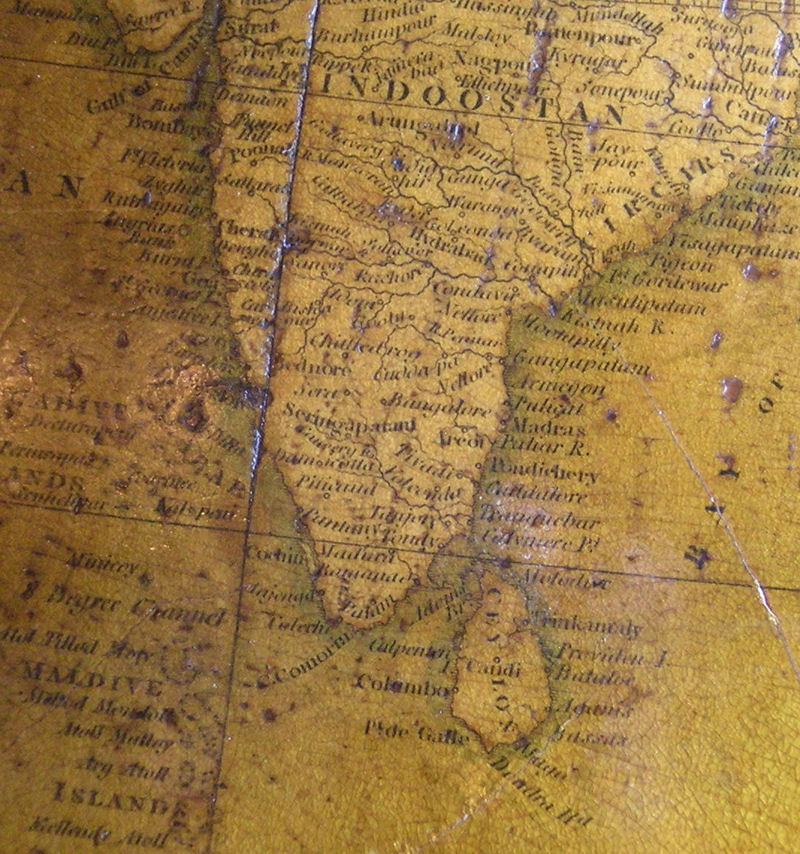
Australia
Between 1606 and 1670 the Dutch seafarer Abel Tansman charted parts
of the Australian North, West and South and he called it New Holland.
That name remained in use for 180 years. Maps were not published initially
to protect trading secrecy. In 1770 James Cook charted the East coast
in the Name of King George III and christened it New South Wales.
It was used as a penal colony.
Matthew Flinders mapped the southern coast of Australia in 1802 but
not published until 1814. He named the whole continent Australia in
1824.
Consequently Australia is not complete on the Charlecote globe and
Antarctica is not present either:
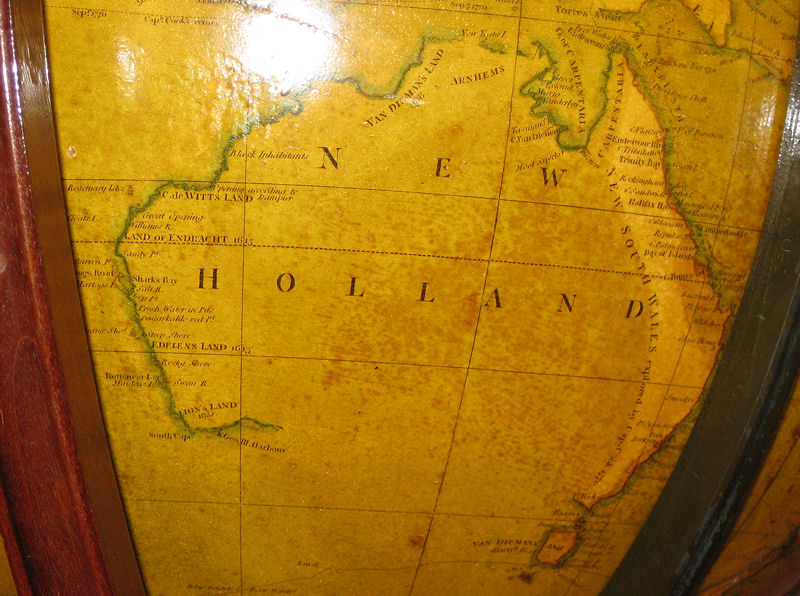
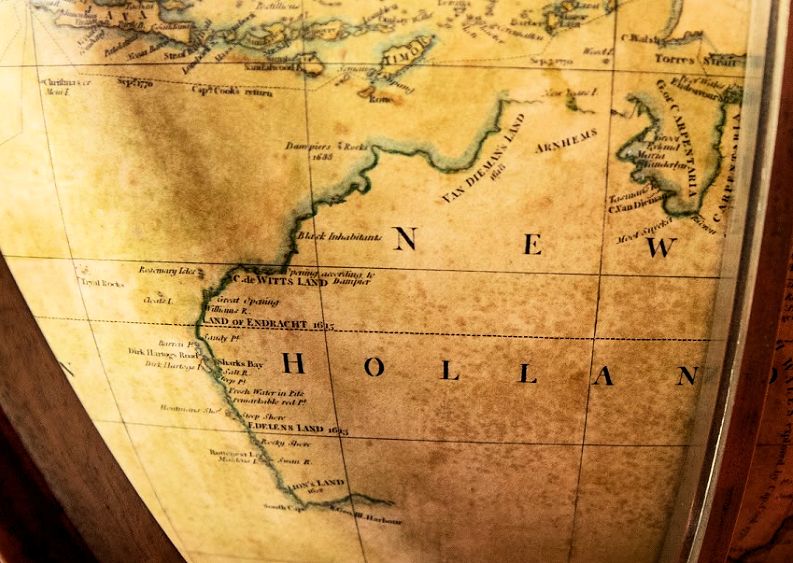
After Restoration
The Celestial globe shows the Magnitude of the stars and a scale is
included on the globe. The figures of the Zodiac are also drawn:
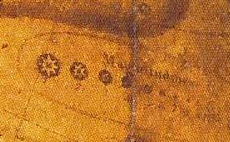 Scale of nine orders of Star magnitude
Scale of nine orders of Star magnitude
Lyra
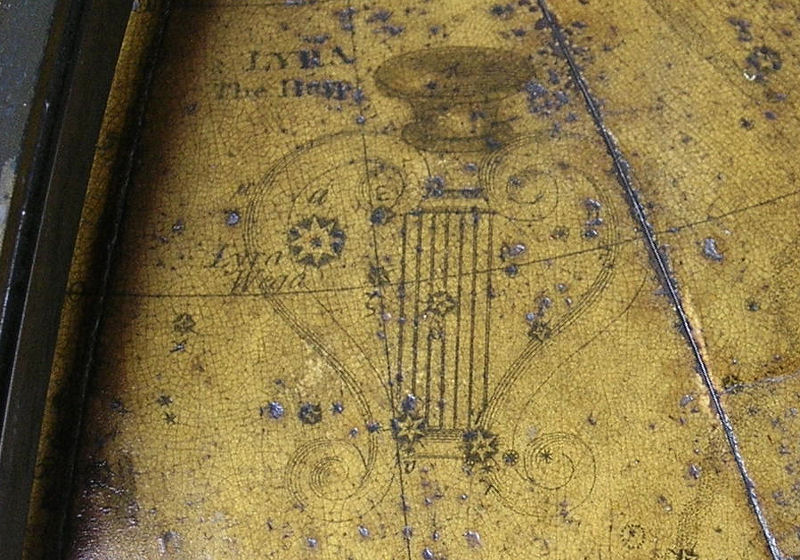
after restoration
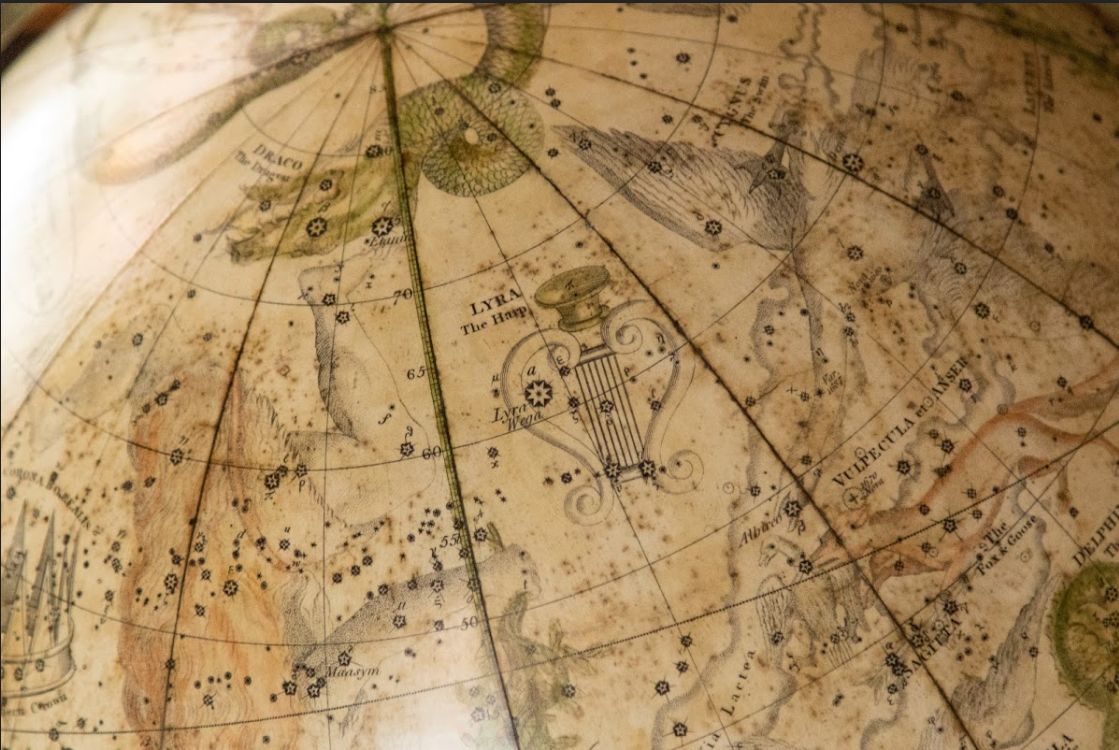
Aquila, the Eagle, is located on the celestial equator
and contains Altair, one of the brightest stars visible from the earth.
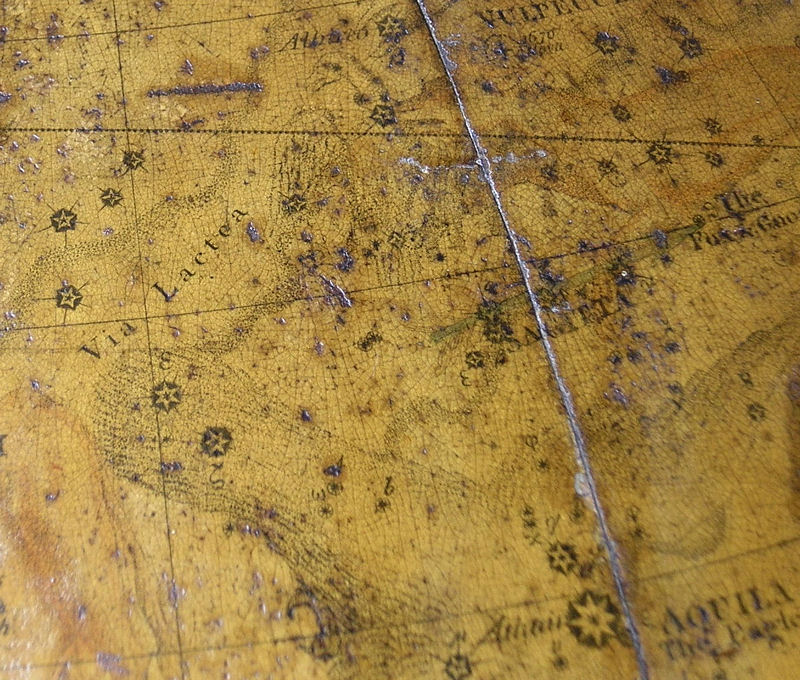
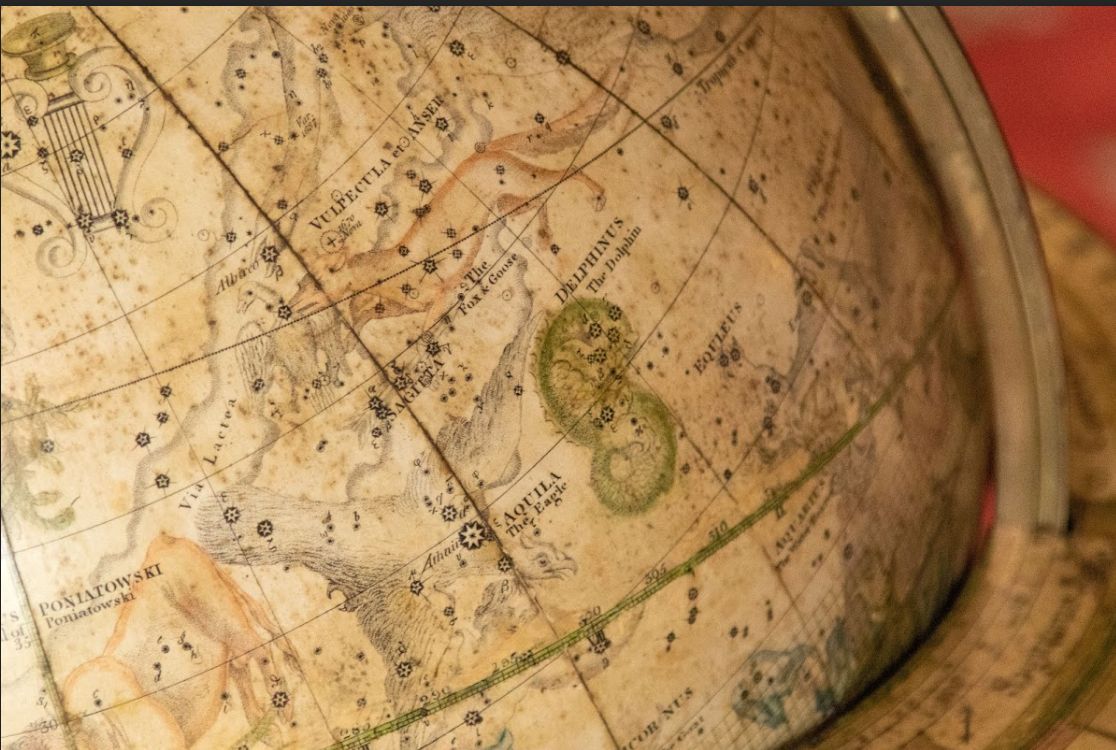
The engraved equators require a lot of
restoration. I show the one from the celestial globe.

Working outwards from the globe the equator
is graduated in degrees and then hours followed by the Houses of the
Zodiac and, finally, months of the year.
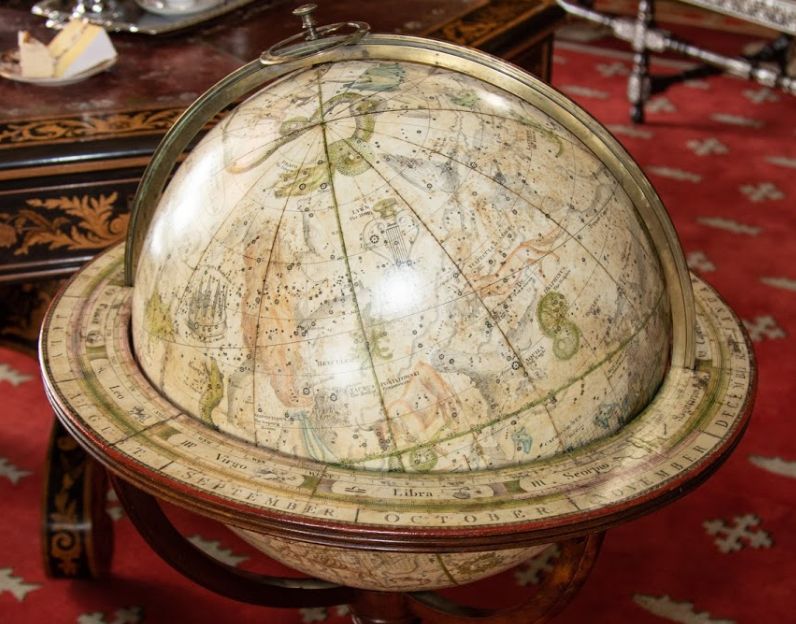
After restoration images Jana Eastwood.
Each globe carries a cartouche. There
are very difficult to read with the easiest being on the Celestial globe.
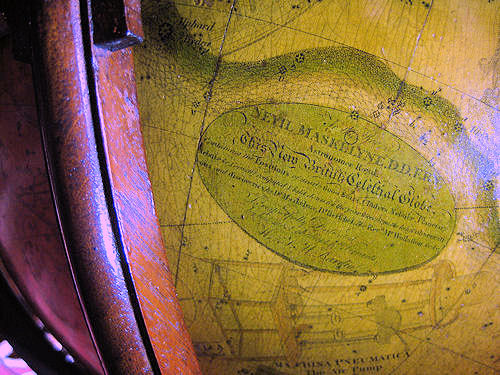
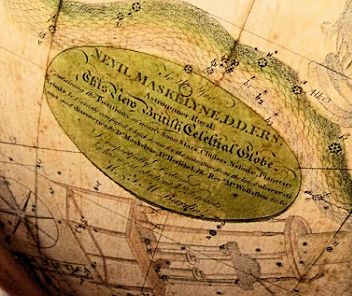 after restoration
after restoration
It transcribes as
To the Rev. / NEVILLE MASKELYNE, D.D.,
F.R.S./ Astronomer Royal/ This New British Celestial Globe /Containing
the Positions of nearly 6000 Stars, Clusters, Nebulae, Planetary Nebulae
&c., Correctly computed & laid down for the year 1800 : from
the latest observati-/ons and discoveries by Maskelyne, Dr. Herschel,
The Revd. Mr. Wollaston &c. &c./ respectfully Dedicated/ by
his most obedient hble. Servants, / W. & T.M. Bardin
The Terrestial cartouche is partly obscured
by the Equatorial frame and I did not have permission to rotate the
globe. It is surmounted by Brittania and Captain Cook (or it could be
Joseph Banks).
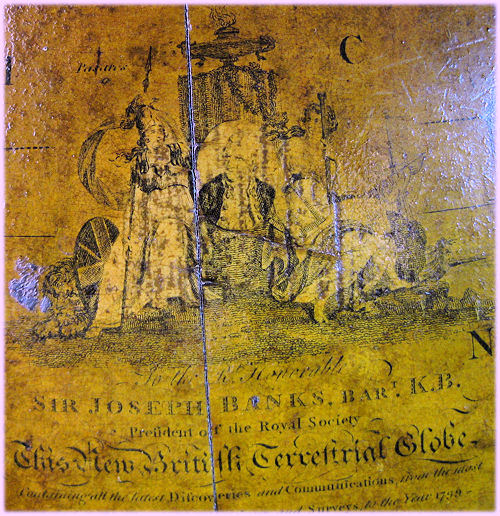 .
.
It reads
To the Rt. Honorable/ SIR JOSEPH BANKS BAR. K. B. / President of the
Royal Society/ This New British Terrestrial Globe/ Containing all the
latest Discoveries and Communications, from the most / correct and authentic
Observations and Surveys, to the year 1799/ by Captn. Cook and more
recent Navigators. Engraved from/ an accurate Drawing by Mr. Arrowsmith,
Geographer/ Additions to 1807 / Respectfully Dedicated / by his most
obedient hble. Servants / W. & T.M. Bardin/
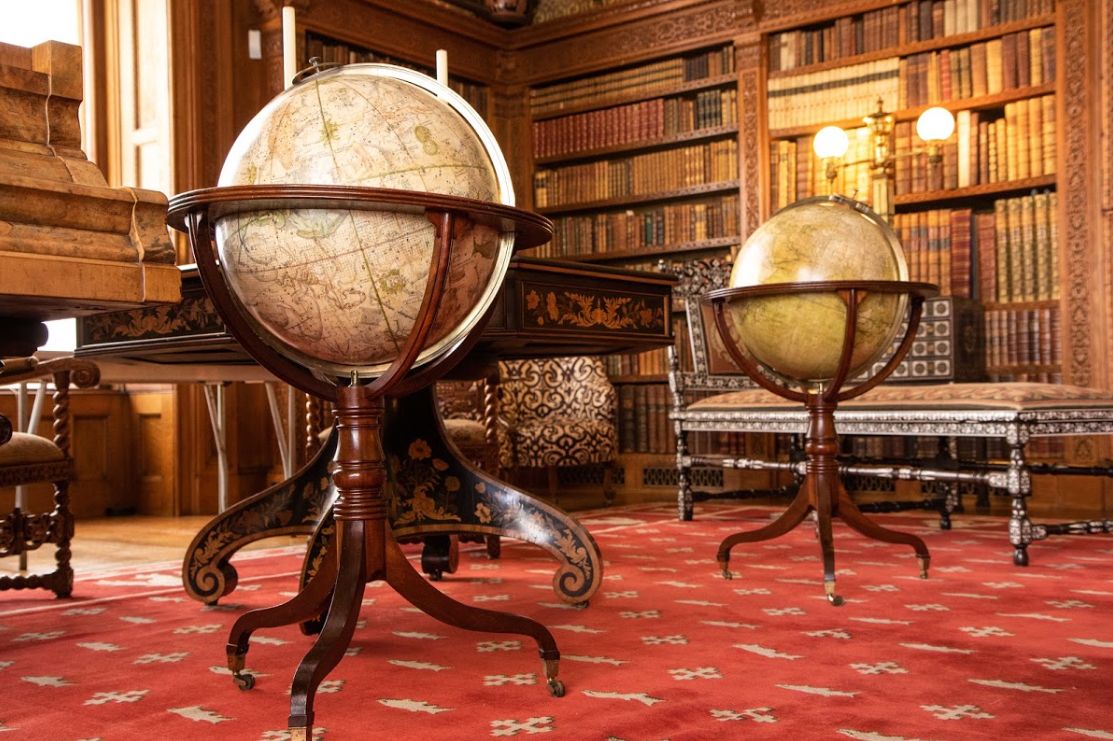
Bardin globes were often more colourful
than the Charlecote globes. Here is an example from 1800
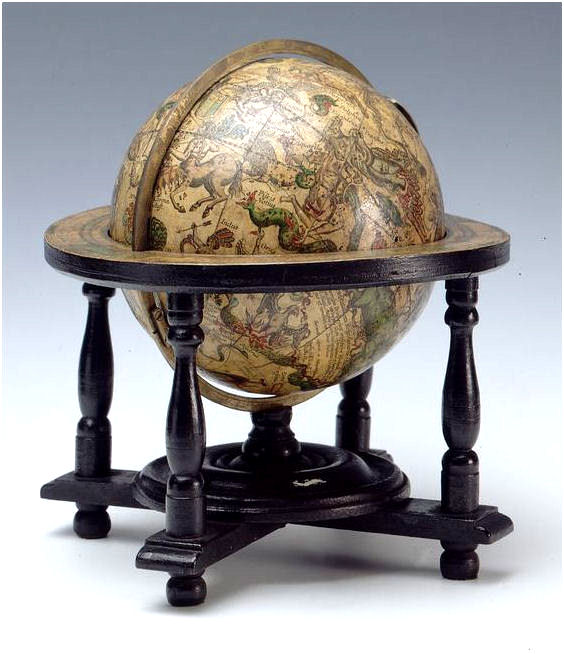
List of globe makers http://www.omniterrum.com/pages/Globe%20makers.html
George D. Glazer Globes and Planetaria http://www.georgeglazer.com/globes/globeref/globemakers.html
Len Mullenger is a Sunday volunteer guide. Any comments are welcome
and can be sent to len@musicweb-international.com
Restoration photographs by Jana Eastwood - a Charlecote volunteer

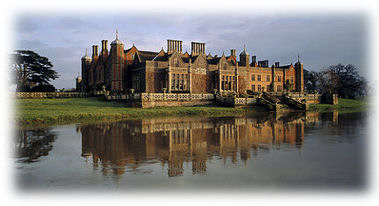

 a globe gore
a globe gore  A
sphere was covered with moist papier-mâché and left to
dry. It was then cut with a sharp knife around the equator to create
two hemispheres. These were then removed from the sphere and glued together
to create a hollow ball. This was covered to a thickness of one eighth
of an inch (3mm) with white enamel made from whitening, oil, turpentine
and glue. The ball was then machined to make a perfect sphere using
a metal rod down the centre to hold it. The metal rod left holes which
marked the two poles and allowed suspension of the globe in a frame..
The globe was then marked into mathematical segments that correspond
to the sections of the map that were pasted on. The map was a copper
engraving that was then printed onto linen paper. Each segment might
have been cut out or the whole printed as a globe gore. The linen paper
was then pasted on so that the segments joined perfectly at the edges.
Where the segments joined at the pole there was often a brass graduated
cap to make it look neater but our globes do not have these. Instead
there is a graduated ring.
A
sphere was covered with moist papier-mâché and left to
dry. It was then cut with a sharp knife around the equator to create
two hemispheres. These were then removed from the sphere and glued together
to create a hollow ball. This was covered to a thickness of one eighth
of an inch (3mm) with white enamel made from whitening, oil, turpentine
and glue. The ball was then machined to make a perfect sphere using
a metal rod down the centre to hold it. The metal rod left holes which
marked the two poles and allowed suspension of the globe in a frame..
The globe was then marked into mathematical segments that correspond
to the sections of the map that were pasted on. The map was a copper
engraving that was then printed onto linen paper. Each segment might
have been cut out or the whole printed as a globe gore. The linen paper
was then pasted on so that the segments joined perfectly at the edges.
Where the segments joined at the pole there was often a brass graduated
cap to make it look neater but our globes do not have these. Instead
there is a graduated ring.


 Scale of nine orders of Star magnitude
Scale of nine orders of Star magnitude







 after restoration
after restoration
 .
.

